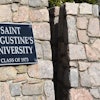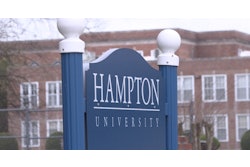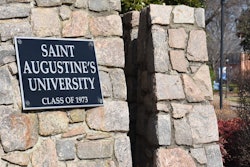The U.S. House of Representatives has approved a bill to extend for five years a program that helps District of Columbia high school graduates better afford the cost of attending public universities and historically Black colleges.
The bill would extend through 2012 the D.C. Tuition Assistance Grant program, whose main goal is to allow D.C. graduates to pay in-state tuition rates at any public college in the nation. Another provision of the law provides district graduates with $2,500 to attend an HBCU nationwide or a private college in the district-area.
The program “reaches students and communities where there is no hope of being able to obtain a college education,” says U.S. Rep. Danny Davis, D-Ill., a Congressional Black Caucus member who is the new chair of a House subcommittee responsible for the program. Program data show 58 percent of students using the program are low income, he adds.
Congress created the program in 1999 citing the lack of a comprehensive state college system in the nation’s capital. The district’s only public college or university, the University of the District of Columbia, is an open-admissions institution. By comparison, residents who live in neighboring Maryland or Virginia can choose from among 40 public two- and four-year colleges.
Under the D.C. TAG program, a high school graduate choosing a public college outside the district can receive aid of up to $10,000 a year, with a maximum of $50,000.
The HBCU provision allows students to claim a maximum of $12,500 over their college careers, the equivalent of $2,500 annually for five years.
Many students using the program have enrolled at HBCUs, Davis says. Five of the top 10 schools selected by grant recipients are Hampton University, Morehouse College, Virginia Union University, St. Augustine’s College and Bennett College. Overall, D.C. graduates have used the assistance at more than 270 institutions in 47 states.
“This program serves a community that is lacking resources for students of color from low-income households,” Davis says.
The program has increased college attendance of D.C. students by 60 percent over the past five years, says Eleanor Holmes Norton, the district’s House delegate. “Most of these students are the first in their families to attend college.”
Norton says the law has stemmed an exodus of taxpayers who had left D.C. in part to access in-state tuitions in Maryland and Virginia.
“This bill provides higher education access to young people here equivalent to opportunities available in all the states,” she says.
The program received $33 million for 2007, and President Bush has proposed a $2 million increase next year.
This law is a classic “leveling of the playing field,” says U.S. Rep. Tom Davis, R-Va., adding that the program has doubled the number of district residents attending college since 2000.
The full House approved the measure by a 268 to 100 vote. The Senate often has provided bipartisan support for the program, but a bill has not yet come up for a vote.
For the 2005-2006 school year, the program provided more than $30 million in assistance to more than 4,700 students, according to data collected by the House. The average grant was $9,500 for public colleges and universities and $2,350 for private institutions.
–Charles Dervarics
There are currently 0 comments on this story.
Click here to post a comment.
© Copyright 2005 by DiverseEducation.com















